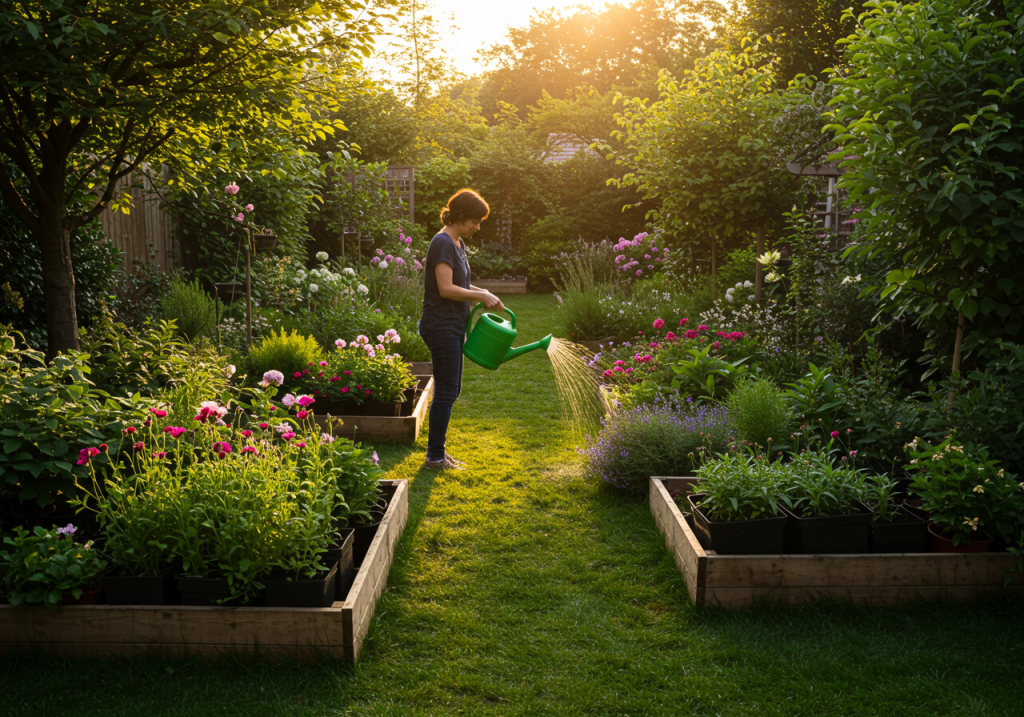How to Create Healthy Boundaries in Relationships?


Next, open and honest communication is key. Imagine you and your partner playing a game of soccer. Without a shared understanding of the rules, fouls and confusion are inevitable. The same applies to relationships. Express your needs and limits clearly, using “I” statements like, “I feel overwhelmed when…” This approach fosters understanding instead of defensiveness. It’s like setting the stage for a successful performance where everyone knows their role and expectations.
Now, let’s talk about consistency. Setting boundaries once isn’t enough—they require ongoing attention and reinforcement. Think of it as tending to a garden. Without regular care, plants wither. Similarly, when someone crosses a boundary, a gentle but firm reminder helps maintain your limits. It’s not about conflict but about guiding interactions in the right direction—like redirecting a river to keep it flowing smoothly.
By implementing these strategies, you’ll not only create healthy boundaries in relationships but also nurture deeper connections built on mutual respect and understanding. After all, knowing how to create healthy boundaries in relationships is a crucial step toward emotional well-being and fulfilling connections.
Building Bridges, Not Walls: How to Create Healthy Boundaries in Relationships
Establishing healthy boundaries is all about effective communication. Picture trying to sail a boat without a map—you’d drift aimlessly, unsure of where you’re headed. Now, imagine you and your partner sitting down to navigate the journey together. By having open, honest conversations about your needs, expectations, and personal limits, you create a clear roadmap for your relationship. This means discussing what behaviors make you feel respected, when you need personal space, and how to foster mutual understanding. Think of it like setting the rules for a game—when everyone knows the guidelines, the experience becomes smoother and more enjoyable.
But here’s the important part: boundaries aren’t barriers meant to keep people out; they are tools for building stronger, more meaningful connections. It might seem counterintuitive, but by clearly defining your limits, you actually allow others to understand and respect you on a deeper level. Consider it like planting a garden. You wouldn’t simply plant seeds and neglect them. Instead, you’d nurture them with water, sunlight, and care—just like relationships thrive when boundaries are acknowledged and respected.
So, the next time you feel tension creeping in, remind yourself that setting boundaries isn’t about shutting down; it’s about strengthening your relationships. It’s your way of saying, “I value myself, and I value our connection.” Knowing how to create healthy boundaries in relationships is a powerful skill that leads to trust, balance, and lasting emotional well-being. So go ahead—build those bridges with confidence!

The Art of Saying No: Mastering Boundaries for Healthier Relationships
Picture yourself juggling multiple responsibilities—your job, friendships, family commitments—and then suddenly, someone throws another task your way: “Hey, can you help me move this weekend?” You genuinely want to help, but your own plate is already overflowing. Here’s the reality: constantly saying yes can lead to frustration and burnout. It’s like trying to pour more water into an already full cup—eventually, it spills over. Learning to say no isn’t about being unkind; it’s about protecting your time and energy, ensuring that you prioritize what truly matters.
But setting boundaries isn’t just beneficial for you—it strengthens your relationships too. When you communicate your limits openly and honestly, you foster trust and transparency, which others will respect. Think of boundaries like a well-maintained garden fence. It keeps your personal space protected while still allowing others to appreciate and enjoy your presence—without overstepping. Plus, when you set clear limits, you inspire those around you to do the same, creating a culture of mutual respect and understanding.
So, the next time you feel torn between obligation and self-care, remember: saying no isn’t about rejection—it’s about affirming your own needs. Embracing this skill can lead to healthier, more fulfilling relationships built on balance and respect. After all, knowing how to create healthy boundaries in relationships is essential for long-term emotional well-being and deeper connections. By valuing your own limits, you create space for more meaningful interactions with the people who matter most.
Navigating Love: A Guide to Setting and Maintaining Healthy Relationship Boundaries
Imagine you’re at a lively party, but the music is blaring too loudly. To avoid discomfort, you might step outside for some fresh air. Boundaries in relationships work the same way—they help you recognize your emotions and communicate what feels right for you. But how do you create these boundaries without making it seem like you’re building walls? The answer lies in communication. Honest, open conversations are essential for ensuring both partners feel heard, valued, and respected.
Now, picture this: You’re watching your favorite movie, fully immersed in the plot, but your partner keeps reaching over and grabbing your popcorn. If you cherish your snacks, it’s completely okay to say, “Hey, can we share this more fairly?” This simple act of expressing your needs not only ensures you get your fair share but also reinforces healthy communication in your relationship. After all, knowing how to create healthy boundaries in relationships is about fostering mutual understanding, not creating distance.

By recognizing your limits and articulating them in a kind yet firm manner, you build a foundation of trust and emotional security. Setting boundaries isn’t about pushing people away—it’s about creating space for a healthier, more fulfilling connection.
Boundaries That Strengthen: Transform Your Relationships Through Clear Communication
Think of boundaries as the blueprint of a healthy relationship. They define where one person ends and the other begins, preventing misunderstandings and resentment from growing like weeds in an untended garden. When you clearly communicate your needs and limits, you’re not just setting restrictions—you’re creating the foundation for a stronger, more fulfilling connection. It’s not about saying, “Don’t do that!” but rather fostering a space where both partners can thrive and feel respected.

Ever tried to guess what someone else is thinking? It’s like solving a puzzle with missing pieces—frustrating and often inaccurate. That’s why clear communication is essential. When you express your thoughts openly, you not only advocate for yourself but also encourage your partner to do the same. Healthy relationships are built on mutual understanding, and that starts with honest conversations where both voices are valued.
Let’s be real—maintaining harmony in a relationship doesn’t mean sacrificing your own comfort. It’s more like a well-balanced seesaw; both sides need to work together for a smooth and stable experience. Knowing how to create healthy boundaries in relationships allows you to say, “This is what I need; this is where I draw the line,” which ultimately strengthens your bond rather than weakens it. So, the next time you feel a twinge of discomfort, recognize it as a cue to speak up. Setting boundaries isn’t about distancing yourself—it’s about deepening your connection through trust, clarity, and mutual respect. Instead of avoiding the conversation, embrace it, and watch your relationships flourish.
From Conflict to Connection: The Essential Role of Boundaries in Romantic Relationships
Imagine you’re at a buffet. Instead of piling your plate with everything in sight, you carefully select what truly satisfies you. In relationships, boundaries work the same way—they help you focus on what’s meaningful while filtering out unnecessary drama or negativity. Rather than restrictions, think of boundaries as a loving framework that allows you to express your needs and limits without fear of conflict. They serve as a safety net, ensuring emotional well-being while strengthening your connection with your partner.
Why are boundaries so essential? Because they cultivate respect and understanding. When you clearly communicate your needs—whether it’s personal space, emotional support, or how you prefer to handle disagreements—it’s like putting on glasses when your vision is blurry. Suddenly, everything becomes clearer. Instead of making assumptions or letting resentment fester, you build a relationship based on honesty, trust, and mutual appreciation.
More importantly, boundaries remind both partners that love doesn’t mean losing individuality. In fact, knowing how to create healthy boundaries in relationships allows you to embrace your passions, grow as an individual, and strengthen your bond as a couple. Rather than seeing boundaries as limitations, consider them the foundation of a thriving relationship. They provide the nutrients that help love flourish, just like rich soil supports a growing plant. So, the next time you hesitate to voice your limits, remember: boundaries aren’t barriers; they’re bridges to deeper intimacy and lasting connection.

Healthy Boundaries 101: Tips for Balancing Freedom and Respect in Relationships
Let’s start with the foundation of any strong relationship: communication. If you feel overwhelmed when a friend drops by unannounced, don’t bottle it up—speak up! Setting boundaries isn’t about shutting people out; it’s about inviting them in on terms that work for you. A great way to do this is by using “I” statements. Instead of saying, “You never give me a heads-up,” try, “I feel stressed when plans are made last-minute.” This subtle shift prevents blame and encourages understanding.
Think of boundaries as a personal safety net. Just as a sturdy fence keeps unwanted guests from barging in, clear boundaries help protect your emotional well-being. Consider this: If you constantly drop everything to help a colleague, what’s the impact on your time and energy? Prioritizing yourself isn’t selfish—it’s essential. After all, you can’t pour from an empty cup, right? Learning how to create healthy boundaries in relationships ensures that your needs are met without neglecting those around you.
And remember, boundaries aren’t rigid rules set in stone. They evolve, just like you do. A plant needs different care as it grows, and the same goes for relationships. Maybe right now, you’re all about spontaneous weekend hangouts, but later, you might crave more solo time. Keeping communication open and adjusting as needed allows relationships to remain dynamic, honest, and fulfilling.




